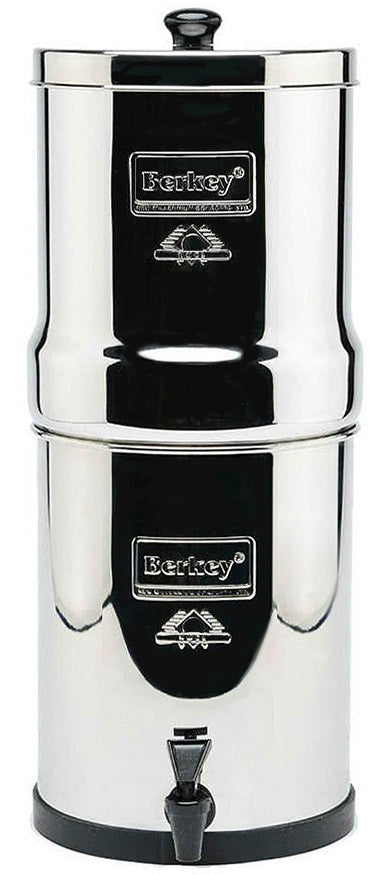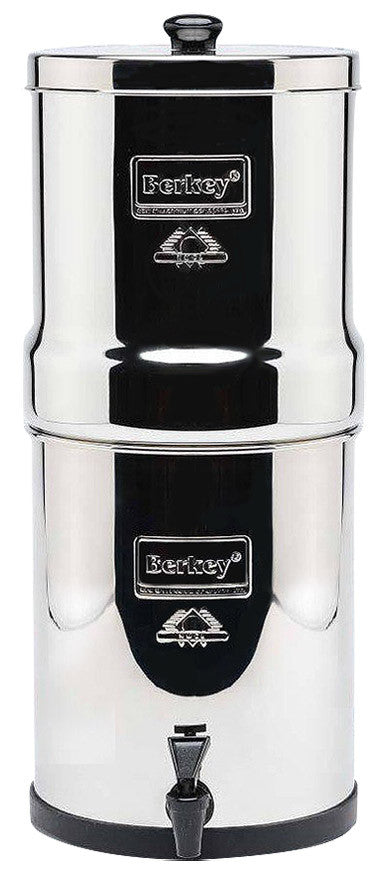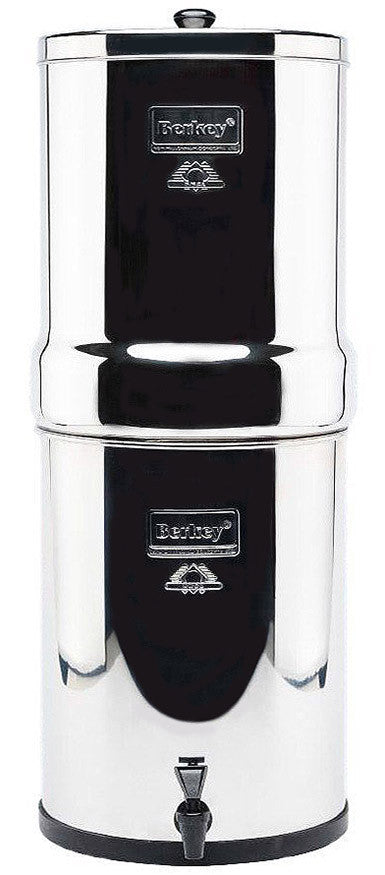Volatile organic pollutants, or VOCs, surround us. But they're quite hard to see.
They're literally in the air we breathe, the cleaning products we use throughout the house, and even sometimes in the water we drink.
Have you ever seen them? Or let alone, felt them?
The issue is that chemicals don't always make themselves visible.
You don't have to spill paint thinner all over your living room carpet to be at risk. VOCs can gradually diffuse out of the furniture, flooring, cleaning solutions, and other household products.
So what are they, then?

Culligan Water. (n.d.). Where do VOCs come from? [Infographic]. Retrieved August 30, 2025, from https://www.culligannation.com/vocs-impact-drinking-water
VOCs are hydrocarbon chemicals that readily vaporize into the air or, in some cases, into water. Since they evaporate so rapidly, they disperse into the environment before many people even know they exist.
Some of them originate from vegetation and soil. However, they actually come from our everyday use. Industry, fuels, household products, and even municipal water treatment release them.
Would it be safe then to ignore them? This is the negative part.
Exposure to VOCs is not harmless.
Inhalation or ingestion of them over a prolonged period may result in significant health impacts.
A short-term exposure may induce headaches or light-headedness. So, you can only imagine how toxic it would be to be exposed to such for a long, long time.
Long-term exposure has been documented to cause liver toxicity and cancer.
And since VOCs surround us everywhere, it is essentially impossible to completely avoid them.
In this article, we will discuss what VOCs are, provide some examples you may be aware of, describe how they affect health, and acquaint you with effective methods of minimizing exposure.
As I mentioned, it's impossible to completely avoid them, but fortunately, there are ways to minimize their impact.
What Are Volatile Organic Contaminants?
Volatile organic contaminants or volatile organic compounds, abbreviated as VOCs, are carbon-based organic compounds that can evaporate or dissolve in water readily.
They are special in that they exhibit extremely high vapor pressure along with low boiling points. That's the reason why evaporation occurs very rapidly.
It is also because of this fact that you can smell gas, paint thinner, or nail polish remover when you open them. Please take it as a cue that VOCs are volatilizing into the surrounding environment.
Natural Sources
Natural or anthropogenic VOCs exist.
Natural VOC emissions include plant volatiles.
Simply, these are chemicals released by trees and other vegetation.
Human-made Sources
Anthropogenic VOCs are all human-made sources. So, the range is quite vast.
It includes the combustion of fuels, industrial activities, construction and building materials, household consumer products, craft products, office devices, and even compressed aerosol products.
|
Combustion & Industry |
Fuel combustion, industrial processes, biomass burning |
|
Building Materials |
Paints, adhesives, sealants, wood products |
|
Consumer Products |
Cleaners, aerosols, craft supplies, office devices |
|
Indoor Emissions |
Tobacco smoke, cooking oils, photo chemicals |
|
Waterborne |
Runoff, pesticides, fuel spills, and water treatment by-products |
Semi-volatile organic compounds, also known as very volatile organic compounds, are the most prevalent VOCs due to their ease of evaporation. Inhalation exposure pathways are prevalent.
Indoor volatile organic compounds, also known as indoor VOCs, are very common. They literally come from everywhere. Think of off-gases from paint, wood furniture products, adhesives, cleaners, tobacco smoke, cooking oil, and photo fixers.
Indoor VOCs create immediate effects on indoor air quality.
Outside is no exception to volatile organic pollutants, too.
Industrial processes, burning of biomass, and motor vehicle exhaust release VOCs that react with nitrogen oxides and carbon monoxide in the air.
Photochemical oxidants and other airborne chemical reaction pollutants exacerbate these issues. They release pollutants into both outdoor and indoor air through inadequate house ventilation.
Water-borne VOCs also often go unnoticed. And we should pay more attention to them.
Runoff from plant manufacturing operations, pesticide application, fuel spillage, and municipal water treatment plant disinfection. These are just a few of many more.
They can cause volatile organic chemicals in the household drinking water.
And that's something that we shouldn't take too lightly.
Chloroform, styrene, and tetrachloride are only some of the many organic contaminants that migrate through tap water.
VOCs are problematic because they are stable and affect human health.
Even at the lower concentrations, exposure to VOC repeatedly has also been associated with respiratory disease, pharyngeal irritation, and neurologic injury. We'll get into this more later.
Examples of VOCs

Now that we know what volatile organic compounds are, we have to ask: what are the volatile organic pollutants that human beings actually expose themselves to every day?
We've briefly covered them above, but we can now go over them in more detail.
• VOCs in Household Products
Believe it or not, but most VOCs are found within common household materials.
Formaldehyde
Formaldehyde is the most prevalent indoor organic chemical in indoor air.
Formaldehyde is emitted from pressed wood products, furniture, adhesives, and fire retardants. So, yes, it's everywhere in our home.
Formaldehyde is stored indoors and is a source of indoor air pollution.
Benzene
Benzene occurs in tobacco smoke, paints, and household cleaners.
Benzene possesses long-term cancer hazards and other toxic health impacts.
Toluene
Toluene is found in nail polish, permanent markers, and solvents.
Toluene is highly volatile and volatilizes rapidly. This affects indoor VOC concentrations.
Xylene
Xylene is found in paint thinner, varnishes, and craft supplies.
Xylene causes dizziness, respiratory and throat irritation, and central nervous system problems. Therefore, long-term exposure to xylene poses a significant risk to you and your family.
Isopropyl
Isopropyl alcohol is used in photography solutions and in most household cleaning products.
Sometimes the smell is so sharp it makes your eyes water.
• Industrial & Environmental VOCs
Then there’s the industrial side.
There are many VOCs that are linked with industrial applications and environmental air pollution.
Trichloroethylene
Trichloroethylene is used as a metal degreaser and cleaner. It is a severe health hazard. Severe, as in it can cause cancer.
Perchloroethylene
Perchloroethylene is used in industrial cleaning and is harmful to health even at very low concentrations. Yes, even at low concentrations. It's THAT dangerous.
Methylene
Methylene chloride, which is found in paint strippers and adhesives, can cause dizziness, nausea, and irreversible organ damage.
Vinyl chloride
Vinyl chloride is used as a vinyl plasticizer and is a human carcinogen with significant human health hazards.
Carbon tetrachloride
Carbon tetrachloride and the other least volatile compounds have already been used as cleaning liquids and fire extinguishants.
Luckily, they are now banned because they pose the utmost human risk and environmental danger.
• VOCs in Water Systems
Even water is not safe.
Drinking water can also contain volatile organic compounds.
Those VOCs are usually by-products of industrial outgassing, pesticide runoff, or by-products of the disinfection process.
Chloroform
Chloroform is created when chlorine reacts with organic material during water treatment.
MTBE
MTBE, a fuel oxygenate, poisoned groundwater nationwide.
Styrene
Styrene, which is used to create plastics and rubber, leaches into water supplies.
Farm VOC pesticides
Farm VOC pesticides tend to leach into streams and rivers, ultimately contaminating urban tap water.
Most people, however, don’t even think twice about it.
The thing is, most VOCs are not tracked automatically. This is exactly why health risks from water sources are high (and we don't even know that!).
As most VOCs are water-soluble, boiling will not prove useful. Additionally, heat can actually concentrate some of the VOCs. It can also vaporize them in a gaseous state.
That is why there is a need for special water filtration to limit VOC exposure via water.
Health Effects of VOC Exposure

I know that volatile organic compounds have a very unpleasant smell. And that's what annoys people the most. But trust me, VOCs are far more than just a smell disturbance. It's more than that.
Risk is a function of (1) exposure intensity, (2) exposure duration, and (2) the VOC involved.
Short-Term Exposure
When people get exposed to VOCs both inside and outside, the effect may be small. But you still feel it.
Headache, dizziness, and nausea are among the most common symptoms.
Others pollute the air with eye, nose, or throat irritation.
It is usually associated with newer, thinner paint, permanent markers, or compressed aerosol products. They emit VOCs rapidly because they have very high vapor pressure.
But that's not all there is. Being exposed to VOCs, even just for a short period of time, can cause difficulty or fatigue in memory.
This is because VOCs affect the central nervous system. But of course, since it's only a short-term exposure.
Most people say that stepping outside into the fresh air can help alleviate all symptoms.
The larger the response, however, the longer one stays indoors where there is minimal air circulation.
Long-Term or Chronic Exposure
The actual VOC threat arises from long-term exposure.
Most indoor VOCs are emitted in a latent form.
Specifically, from furnishing and building products, wood products, paint and art supplies, fire retardants, and office equipment.
Such semi-VOCs collect in indoor air. This, in turn, results in high concentrations of indoor VOCs.
Indoor air pollutants are two to five times higher than outdoors because most VOCs get trapped indoors.
Long-term exposure to VOCs poses a significant health hazard. Even short-term exposure is already dangerous as it is, how much more if long-term, right?
Respiratory diseases, including asthma and chronic bronchitis, are prevalent, particularly indoors.
VOCs also put a strain on the liver and kidneys, the two organs that remove harmful chemical substances from the body.
Certain organic chemical substances, such as methylene chloride or carbon tetrachloride, are organ poisons even in trace quantities.
The central nervous system is also one of the highest targets. Long-term exposure to reactive organic gases will lead to confusion, impaired coordination, and impaired memory.
Reproductive problems also occur. Certain organic pollutants disrupt hormones and lead to pregnancy complications. Cancer is the most lethal threat of all.
Vulnerable Groups
Some groups of people are more likely to be exposed to indoor VOCs and outdoor air pollution.
So, if you have children, pregnant women, or the elderly in your household. All the more reason for you to be concerned.
-
Children are particularly exposed because their immune and respiratory systems are still not fully developed.
-
The elderly metabolize chemical compounds more slowly. And with their age, they're also more susceptible to chronic disease.
-
Pregnant women are also exposed due to the likelihood of VOCs influencing fetal development.
-
Individuals with weakened immune systems are particularly vulnerable to the adverse health effects of indoor air pollution.
With all this, it becomes a necessity to enhance the quality of indoor air.
Since most VOCs result from consumer products, household cleaners, cooking oil, or outdoor biomass burning, it is impossible to avoid them.
However, minimizing contact and being aware of indoor air pollutants can make a significant difference.
Reducing VOC Exposure: Practical Solutions

To reiterate, complete removal of all VOCs is impossible.
However, there are easy measures available to minimize exposure and improve indoor air quality.
Small steps can lead to great benefits for human health.
Indoor Air Quality Tips
Ventilation comes first. Paint, cook, and clean with windows open.
New air decreases indoor VOCs. Low-VOC paint and furniture also cut exposure.
Many VOC labels now list products with low emissions.
Smokers should also avoid a quick step since tobacco smoke can release VOCs and other indoor air pollutants trapped indoors.
Safe Product Use
Home and consumer products emit VOCs indoors; therefore, handle them with caution.
Instead of using strong organic solvents, opt for natural cleaning substitutes.
Place chemicals such as isopropyl alcohol, paint thinners, or photographic developer in tightly covered containers.
Place them outside of occupied spaces to prevent VOCs from emitting into indoor air.
Eliminate aerosol compressed products, art materials, and fire retardants in a manner that prevents them from becoming landfill waste, from which they can leach into the ground and water.
Clean Drinking Water
For drinking water, filtration is the best option.
Activated carbon filtration is commonly cited as being one of the best ways of eliminating volatile organic compounds VOCs.
Organic contaminants are captured by carbon when water is filtered, substantially lowering VOC levels.
Boiling the water will not be helpful and, in fact, will exacerbate the presence of volatile organic pollutants.
For instance, hot water can vaporize VOCs such as chloroform into the air.
An effective water filter reduces health hazards by eliminating VOCs from reaching the faucet.
Those systems that eliminate chemical organic compounds safeguard both short- and long-term health effects of VOC exposure.
Pure water with improved indoor air quality is one of the best means of safeguarding human health from organic contaminants.
How Do We Make Water Safer
When other people plan to limit VOC exposure, they think about indoor air quality.
Drinking water is usually not considered. However, it can actually harbor volatile organic compounds from factory effluent, disinfection byproducts, or burst storage systems.
Boiling water would not eliminate VOCs, so filtration is a more convenient option.
One of the most effective means is through activated carbon.
This material traps organic chemical substances as water passes through. This removes VOC content even before the water reaches your glass. It's that effective!
Carbon block filters can eliminate a wide range of organic impurities, including very volatile organic compounds, that other filters cannot trap.
This is where Berkey will likely come to mind. It utilizes the best-shelf carbon block technology in a gravity filter system, allowing it to remove most VOCs without the need for power.
Third-party analysis has confirmed the effectiveness of the filters in detecting organic contaminants in drinking water.
For those who want a peace of mind solution, Berkey offers a simple but sure way to keep your water clean and safe from VOCs indoors.
Final Thoughts
Volatile organic compounds are everywhere!
We must first accept this, so we can take action.
They're released from consumer goods, building materials, and manufacturing operations.
And yes, even from city water supplies.
Most VOCs are odorless, yet their impact on human health is not fiction.
From simple irritation to chronic dangers like respiratory illness or cancer, these chemicals can't be ignored.
The better news is that people are not exactly helpless when it comes to them.
The choices we make can make a difference. A very big difference.
Ventilating buildings to improve indoor air quality, selecting safer consumer products, and storing chemicals properly all contribute to minimizing exposure.
Of no lesser importance is providing drinking water that is free of carcinogenic VOCs. These are the same contaminants that standard treatment cannot guarantee to remove entirely.
Clean water and purer air make healthier indoor lives for all.
Families can have a reliable tool for reducing their daily intake with products like Berkey Water Filters.
VOCs are an inevitable part of living, but their impact can be avoided.
It only requires a few simple measures to breathe freely and drink openly.
← Older Post Newer Post →





